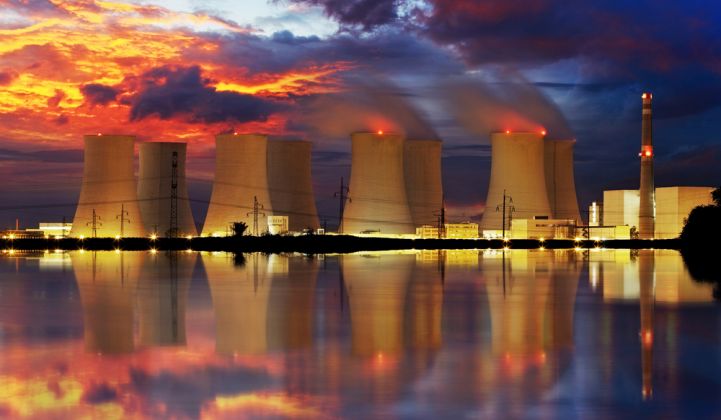Japan is struggling to find viable foreign buyers for its reactor technology in an expensive and competitive global nuclear market.
Only half a dozen nations currently have credible nuclear export capabilities. And besides Japan, the true export potential of at least two — the U.S. and France — is in doubt.
A recent report in the Japanese daily Mainichi Shimbun said a government strategy to export nuclear power technology had “run aground amid rising safety costs and deteriorating prospects for project profitability.”
Proposed projects in Turkey and the United Kingdom had both hit roadblocks, the Mainichi Shimbun noted. The report cited an expert who predicted Japan might have to import Chinese-made reactors within a couple of decades.
Press coverage of the issue last month prompted Mitsubishi Heavy Industries (MHI), one of three conglomerates with nuclear export hopes in Japan, to say it was still pursuing a reactor deal in Turkey.
“The feasibility study report is currently under evaluation by the Turkish government and the Ministry of Energy and Natural Resources, and MHI will continue to support this effort,” said the company in a press note.
But Edward Kee, principal consultant at the Nuclear Economics Consulting Group, said other potential buyers, such as the United Arab Emirates, are shunning Japan’s boiling water reactor (BWR) technology in favor of pressurized water reactor (PWR) designs.
“The market seems to prefer PWR designs, so the Japanese BWR designs seem to be at a disadvantage,” Kee told GTM. “The UAE was the most recent large nuclear build and had a preference for PWR designs.”
Similarly, recent nuclear procurement programs in Saudi Arabia and South Africa have been restricted to PWRs, he said.
Japan's nuclear setback
Besides touting an unpopular technology, Japanese nuclear vendors face two other hurdles in selling their expertise abroad. One is that new reactor construction stopped in Japan after the Fukushima Daiichi nuclear disaster in 2011, so developers’ new-build credentials are starting to look a little dusty.
Japan’s experience in building early Advanced BWR projects, such as Hamaoka 5 and Kashiwazaki Kariwa units 6 and 7, “is now decades old,” said Kee.
Also, and perhaps more importantly, Japanese nuclear vendors are not state-owned like developers from China, Russia and South Korea. That puts Japanese firms at a disadvantage in terms of accessing finance and accepting risk.
These problems are not restricted to Japanese firms, though. They also apply to U.S. vendors.
Struggles in the U.S. nuke sector
While Japanese nuclear is at least enjoying something of a gradual recovery at home, with nine reactors back online after Fukushima and a further 17 looking to restart, in the U.S. the domestic sector is a mess.
This month saw Dominion Energy absorbing Scana Corporation after the latter failed to keep construction of two reactors at the Virgil C. Summer Nuclear Generating Station afloat.
A little over 100 miles away, Georgia state lawmakers have expressed concerns that a couple of new reactors at the Alvin W. Vogtle Electric Generating Plant, which are already half a decade behind schedule, could see further delays.
Six reactors out of a total of 104 have shut down across the U.S. since 2012, according to the Center for Climate and Energy Solutions, and a further 13 are due to close before 2025.
Meanwhile, a 2017 study by the Massachusetts Institute of Technology found two-thirds of U.S. nuclear power capacity could become unprofitable over the next few years.
When publicly owned U.S. nuclear developers do not even have a viable domestic market to play in, it is hard to see how they might compete overseas. There are efforts underway to revive the U.S. nuclear industry, but industry advocates say much more support is needed.
U.S. nuclear export prospects are thus beginning to look a lot like those in Japan — and also those in France, which has been struggling to launch its Evolutionary Power Reactor technology. Like the U.S. and Japan, France seemingly has little appetite to attach state guarantees to nuclear projects abroad.
Given enduring concerns over reactor costs and delays, increasingly only state-held entities from China, Russia and South Korea are in a position to jostle for foreign reactor contracts. And surprising though it may seem to U.S. observers, there is plenty to jostle for.
Despite the precarious state of the American market, 10 gigawatts of new nuclear build came online worldwide in 2018, said Dr. Jonathan Cobb, senior communication officer at the World Nuclear Association.
“And around 15 gigawatts [are] expected in 2019, which is the highest level seen since the 1980s,” he said. “As the world seeks to shift away from fossil fuels, this growth in nuclear new build should continue, so governments should support their industries if they want to benefit.”




